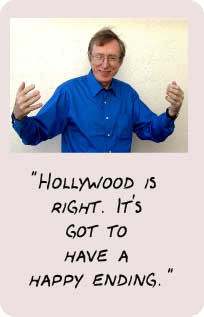|
|
Katalina Groh, Larry Prusak: Some of the world's leading thinkers |
| Storytelling to ignite change: Steve Denning |
 |
The
necessity for a happy ending
And most important, Hollywood
is right. It's got to have a happy ending. I have had no success in telling
a story: “Let me tell you about an organization that didn’t implement knowledge
management and it went bankrupt.” No success at all with this kind of story.
|
| brains are not very smart, but they are
very quick and they make a lot of noise.
And so if I tell you a story with an unhappy ending, that company that bankrupt because it didn’t implement knowledge management, what seems to be happening is that these ancient parts of the brain, the limbic system kicks in and the message is: “Fight! Flight! Get out of here! Trouble! Something bad is happening!” and so on. Now the human brain, the cortex, can intervene and override this and say something like, “Now calm down, calm down, let’s analyze this, we may be able to learn something from this experience,” but by the time the commotion is over, the opportunity to invent a new future is past. Learning may take place, but no rapid action ensues. There is no springboard effect. But by contrast, if I tell you a story with a happy ending, what seems to be happening is that the limbic system kicks in with something called an endogenous opiate reward for the human brain, the cortex. Basically, it puts the human brain on drugs. It pumps a substance called dopamime into the cortex and this in turn leads to a warm and floaty feeling, the kind of feeling you have after you have just seen a wonderful wonderful movie. And this is the perfect frame of mind to be thinking about a new future, a new identity for yourself or your organization. |
| Books and videos on storytelling *** In Good Company : How Social Capital Makes Organizations Work by Don Cohen, Laurence Prusak (February 2001) Harvard Business School Press *** The Social Life of Information, by John Seely Brown, Paul Duguid (February 2000) Harvard Business School Press *** The Springboard : How Storytelling Ignites Action in Knowledge-Era Organizations by Stephen Denning (October 2000) Butterworth-Heinemann *** The Art of Possibility, a video with Ben and Ros Zander : Groh Publications (February 2001) |
| The views expressed on this website are those of Stephen Denning, and not necessarily those of any person or organization |
| Site optimized in 800x600: webmaster CR WEB CONSULTING |
|
|
|
|